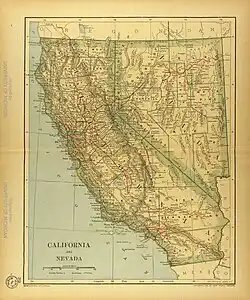
California’s migration history is distinguished by a series of dynamic population movements that have shaped the state’s social, economic, and cultural fabric. From the earliest settlement by Indigenous peoples and the establishment of Spanish missions to the surge of “Forty-Niners” during the Gold Rush and subsequent waves of immigrants from Asia, Latin America, and beyond, each influx introduced new customs, industries, and communities. By examining these historical movements, one gains deeper insight into California’s evolving identity as a beacon of opportunity and a mosaic of global influence.
Research your ancestors on MyHeritage
List of California historical migration routesList of California historical migration routes
| Time Period | Ethnic Group | Origination Location | Arrival Location | Motivating Factors |
|---|---|---|---|---|
| Pre-contact era (before 1542) | Indigenous peoples (various tribes) | Across North America (migratory patterns over millennia) | Entire region now known as California | Subsistence, seasonal hunting/gathering, trade, community settlement |
| Spanish Colonization (1769–1821) | Spanish missionaries, soldiers, and settlers | Viceroyalty of New Spain (primarily central and western Mexico) | Alta California (missions, presidios, and pueblos) | Religious conversion, territorial expansion for Spain, establishment of missions |
| Mexican Era (1821–1848) | Mexican ranchers, government officials, military families | Central and northern Mexico | California ranchos, particularly in coastal and southern regions | Land grants under Mexican rule, ranching opportunities, trade |
| Early American Settlement (1830s–1840s) | American pioneers and settlers (often of European descent) | Eastern United States (Midwest, East Coast) | Northern and central California (via overland trails like the Oregon Trail and the California Trail) | Manifest Destiny ideology, agricultural opportunity, farmland |
| California Gold Rush (1848–1855) | "Forty-Niners" (diverse groups: Americans, Europeans, Latin Americans, Australians, Chinese) | Various origins worldwide (predominantly the eastern US and China) | Goldfields in the Sierra Nevada foothills and Northern California | Gold discovery at Sutter’s Mill, pursuit of wealth, adventure |
| Chinese Immigration (1850s–1880s) | Chinese immigrants (mainly from Guangdong province) | Southern China (particularly the Pearl River Delta region) | San Francisco and other coastal regions (later expanding inland to railroad sites and mining towns) | Economic opportunity, escaping conflict and poverty in China, railroad construction jobs |
| Southern European & Latin American Immigration (1860s–1890s) | Italians, Portuguese, Mexicans, Chileans, and others | Southern Europe, Central and South America | Coastal cities (San Francisco, Los Angeles) and agricultural regions (Central Valley, vineyards) | Labor demand in agriculture, fishing, and urban industries |
| Japanese Immigration (1880s–1924) | Japanese laborers and farmers[1] | Japan (mainly southwestern regions) | California agricultural areas (e.g., Central Valley) and urban enclaves | Economic opportunity, labor shortages in agriculture and industry |
| Great Migration of African Americans (1910–1930) | African American migrants | Southern United States (e.g., Texas, Louisiana, Arkansas) | Urban centers in Los Angeles, Oakland, and San Francisco | Escape from Jim Crow laws, search for industrial jobs, better social and economic conditions |
| Dust Bowl Migration (1930s) | “Okies” and “Arkies” (primarily white migrants from farming communities) | Great Plains (Oklahoma, Arkansas, Texas) | Central Valley and agricultural regions of California | Collapse of agriculture due to drought and economic hardship, search for work in California fields |
| World War II Defense Industry Boom (1941–1945) | Americans of diverse backgrounds (including African Americans, Midwesterners, Southerners) | Nationwide (Midwest, South, rural areas) | Coastal shipyards (San Francisco Bay Area, Los Angeles, San Diego), aircraft factories | Wartime industrial jobs, higher wages, military expansion |
| Post-War & Suburban Expansion (1945–1960s) | Veterans, middle-class Americans | Other US states (Midwest, East Coast) | California suburbs (e.g., Los Angeles, San Diego, San Jose) | GI Bill benefits, booming aerospace and tech industries, homeownership opportunities |
| Immigration After 1965 (1965–present) | Global immigrants (Latin American, Asian, African, Middle Eastern) | Mexico, Central America, East Asia, Southeast Asia, etc. | Urban and suburban regions across California (e.g., Los Angeles, Bay Area) | Changes in US immigration law, family reunification, economic opportunity, political asylum |
| Southeast Asian Refugees (1975–1990s) | Vietnamese, Cambodian, Laotian, Hmong | Southeast Asia (after Vietnam War, conflicts in Cambodia and Laos) | Communities in Orange County (Little Saigon), Fresno, Sacramento, and the Bay Area | Political upheaval, refugee resettlement programs, family reunification |
References
- ↑ Japanese Immigrants. THE PEOPLE AND COMMUNITIES OF THE 19TH CENTURY CENTRAL VALLEY - Fresno City & County Historical Society

